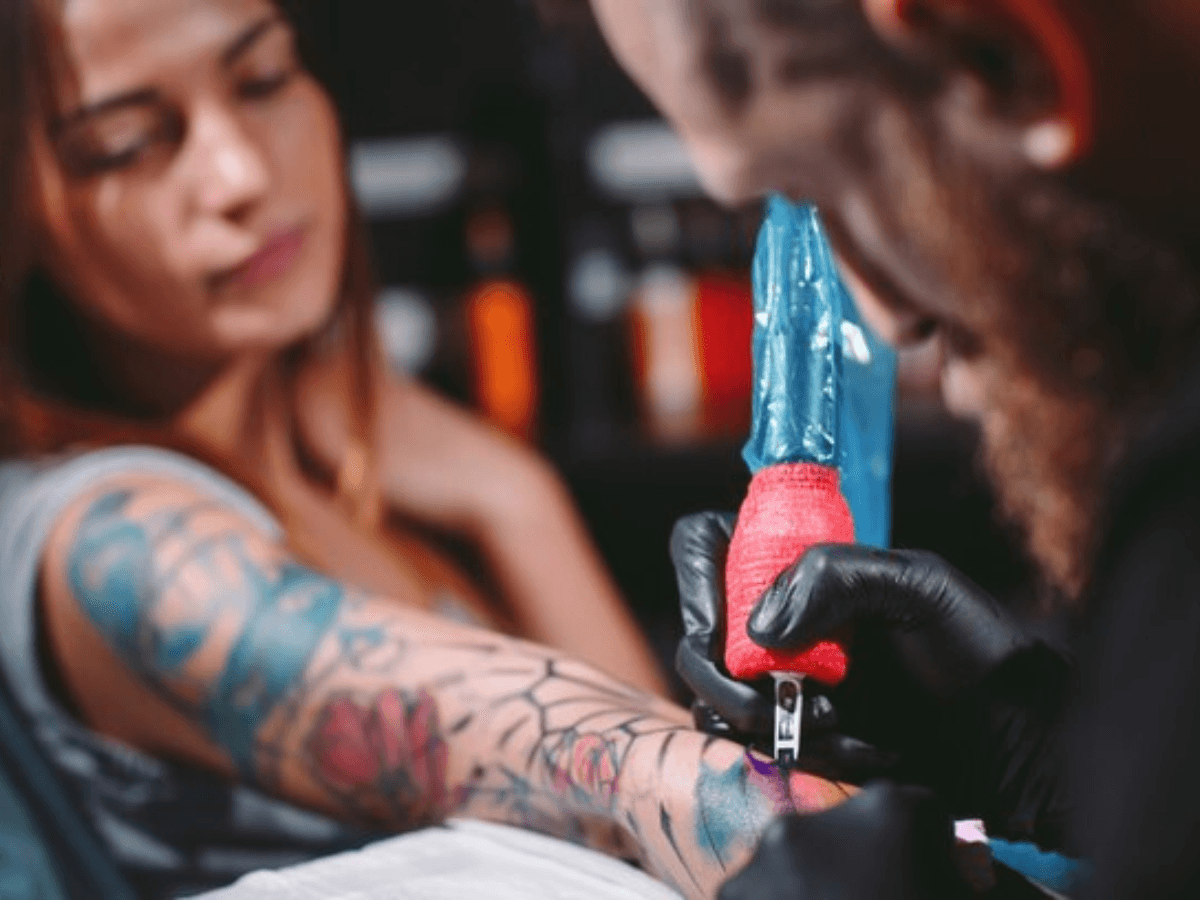Introduction
Yes, you can tattoo over a removed tattoo, but it’s important to know its advantages and disadvantages. The skin may not be the same after removing a tattoo. It’s important to let skin heal completely before getting a new tattoo.
Many people ask Can You Tattoo Over A Removed Tattoo, so if you want to get a new tattoo over a removed tattoo, it’s good to look for a tattoo artist who has already made a tattoo over a removed tattoo.

Understanding Tattoo Removal
If you are thinking about making a tattoo over the removed tattoo, its important to first understand the tattoo removal process.
There are some famous tattoo removal processes, the most famous is laser tattoo removal which is a good and effective method. Let’s look at the different methods for tattoo removal.
Methods of Tattoo Removal
1. Laser Tattoo Removal
- How It Works: The laser sends some bursts of light that go into the skin. These bursts of light go and target the tattoo ink. Different colors of ink need different types of light.
- Number of Sessions Needed: The number of sessions needed to completely remove a tattoo depends on factors like the size, color, age, and location of the tattoo.
- How Well It Works: Laser removal can completely remove a tattoo. Its effectiveness depends upon factors like tattoo size, color, and skin type.
2. Surgical Removal
Surgical removal means cutting out the tattooed skin. This method is also effective and not too costly.
- How It Works: A local anesthetic is used to numb the area. Then after this process, the skin is cut out. They are then stitched back in different way.
- Effectiveness: Surgical removal gets rid of the tattoo completely, but it leaves a scar.
You May Also Like: Does Tattoo Ink Expire

3. Skin Sanding
This involves sanding down the top layer of the skin to remove tattoo. This method is used less often because it can leave scars.
- How It Works: A spinning tool sands away the top layers of skin, which helps to remove the tattoo ink.
- Effectiveness: Skin sanding can make tattoos lighter, but it’s not as good as laser removal. It might not get rid of all ink.
Considerations for Tattoo Removal
Skin Type: Many skin types react differently to tattoo removal. Darker skin may be more likely to change color after treatment.
Tattoo Age: Older tattoos are usually easier to remove because the ink has already faded a bit over time.
Ink Colors: Some ink colors are more difficult to remove than others.
Pain and Discomfort: Tattoo removal can hurt. The treated area might be swollen or may get redness.

Tattooing Over a Removed Tattoo: Is It Possible?
Yes, it is possible to tattoo over a removed tattoo, but there are several factors on which you should act upon.
Checking the Skin
After tattoo removal, your skin might not be the same as before. The skin might get scars and may the color of skin be changed. Before getting a new tattoo, it’s important to check how your skin looks and feels.
1. Scarring
- Possibility of Scarring: Laser removal and surgical treatment can lead to scarring, which may affect the appearance of a new tattoo.
- Tattoo Design: The new tattoo design should be chosen to hide any scars.
2. Skin Texture
- Texture Changes: The skin might feel different after tattoo removal, which can affect how the new tattoo appears.
- Tattoo Technique: An experienced tattoo artist can adjust their technique to adjust any possible texture changes.
Waiting Period
After completing the tattoo removal process, it’s important to wait for the skin to fully heal. After the skin is healed, then think about getting a new tattoo.
- Healing Time: Its good to at least wait for 6 to 12 months before getting a new tattoo.
- Conversation with a Professional: Talk to your tattoo artist to find out when your skin is ready for a new tattoo.

Personal Experience Of Getting A Tattoo Over A Removed Tattoo
My Tattoo Removal Experience
- Laser Removal Process: I chose laser tattoo removal because it works well. The process was bit uncomfortable for me. I also got redness on my skin get swelled also.
- Number of Sessions: It took eight laser sessions to make the tattoo much lighter. The process lasted over a year. I also had to take breaks between sessions to let my skin heal.
- Results: The tattoo wasn’t completely gone, but it was faded enough to get a cover-up tattoo.
Getting a Cover-Up Tattoo
- Choosing the Right Artist: I found a tattoo artist who was good at cover-ups and he also knew that how to work with skin that had been treated before. In our meeting, we talked about design ideas and checked the condition of my skin.
- Design Planning: The artist and I worked together to create a design that included things I liked and covered up the old tattoo. We chose a bigger design with colors and shapes to hide any leftover ink and scars.

Factors to Consider Before Tattooing Over a Removed Tattoo
Getting tattoo over a removed tattoo is a difficult decision, its important to keep following factors in mind:
1. Talk to Experts
- Skin Doctor: Go to a skin doctor to know about your skin condition and also discuss about getting a new tattoo over a removed tattoo.
- Tattoo Artist: Find a tattoo artist who is skilled in cover-ups to check your skin and help you choose the best design options.
2. Check the Condition of Your Skin
- Scarring and Texture: Look for changes in skin texture or if may you get scars after removal process and see it might had affected the new tattoo.
- Skin Sensitivity: Look for any extra sensitivity in the treated area and how it might affect getting the new tattoo.
3. Plan for Aftercare
- Healing Process: Follow your tattoo artist’s aftercare instructions to ensure proper healing and minimize the risk of problems.
- Ongoing Care: Be prepared for caring your skin.

Conclusions
You can tattoo over a removed tattoo, but it needs proper planning. . After removing a tattoo, your skin might have scars or changes that could affect the new tattoo. It’s important to wait until your skin is fully healed, which usually takes 6 to 12 months.
Find a skilled tattoo artist who knows how to do cover-ups. They can help create a design that hides any leftover traces of the old tattoo.
FAQ's : Can You Tattoo Over A Removed Tattoo
Q1: Can I get a tattoo over a scar from tattoo removal?
Ans: Yes, you can get a tattoo over a scar from tattoo removal. But it’s important to make sure the scar has fully healed, which can take some period of time.
Q2: Does tattoo removal completely get rid of the tattoo?
Ans: Tattoo removal usually makes the tattoo much lighter, but it might not completely disappear. Some traces of the tattoo or scars may still be visible.







